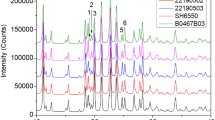Ceftriaxone sodium is an antibiotic used clinically.We have developed a strategy for evaluation of the consistency of ceftriaxone sodium for injection and used it to replicate the formulation. Comparison of the quality of generic and original raw materials and analysis of the process of drug production revealed that the quality of ceftriaxone sodium raw material is the most important factor in replicating the formulation, and a key factor affecting the quality of raw materials is the ceftriaxone sodium crystallisation process. Secondly, the solution clarity of the formulation, another key aspect, was addressed by controlling the leachable components found in rubber closures used in the packaging. The time to achieve therapeutic efficacy of the preparation could be preliminarily evaluated by determining the rates of salt formation and protein binding. Finally, the key quality control index and drug quality standards were evaluated by systematic comparison of the pharmaceutical index of generic products with that of the original preparation, particularly the impurity profile. On this basis, a strategy for the evaluation of ceftriaxone sodium for injection has been developed.





Similar content being viewed by others
References
Center for drug Evaluation, Notice on soliciting public opinions for “The technical requirements for consistency evaluation of listed chemical generic drugs (injections)”, December 22, 2017; http://www.cde.org.cn/news.do?method=largeInfo&id=314268.
C. Q. Hu, Chin. J. Antibiot., 44(3), 281 – 288 (2019).
P. A. Lambert and B. R. Conway, J. Chemother., 15(4), 357 – 368 (2003).
I. Arnet, M. Altermatt, Y. Roggo, and G. Schnetzler, J. Chemother., 27(6), 337 – 342 (2015).
J. Xue, Y. H. Jia, J. Li, et al., Acta Pharm. Sin., 49(7), 1034 – 1038 (2014).
L. Tu, Quality Evaluation of Domestic Ceftriaxone Sodium for Injection, China Pharmaceutical University (2002).
D. S. Zhang, J. Xue, S. C. Yao, et al., Chin. J. New Drugs, 25(22), 2606 – 2613 (2016).
X. M. Chong, X. Dong, S. C. Yao, et al., Drug Dev. Ind. Pharm., 45(1), 159 – 167 (2019).
X. M. Chong, X. Dong, S. C. Yao, et al., Chin. J. Antibiot., 44(8), 942 – 945(2019).
L. Lu, Dissertation, National Institutes for Food and Drug Control, Beijing (2011).
H. T. Qu, Dissertation, Shenyang Pharmaceutical University, Shenyang (2011).
J. Yu, L. H. Yang, C. Q. Hu, et al., Central South Pharmacy, 12(02), 106 – 109 (2014).
Y. Han, B. Chen, Y. Liu, et al., Chin. J. New Drugs, 28(19), 2353 – 2359 (2019).
Y. Zhao, C. Q. Hu, S. C. Yao, et al., 11(5), 8 – 18 (2021).
J. Li, L. X. Wang, S. C. Yao, et al., Curr. Pharm. Anal., 9(2), 145 – 158 (2013).
Chinese Pharmacopoeia Commission, Chinese Pharmacopoeia (2015 Edition), General Chapter 0902, Clarity of Solution.
Chinese Pharmacopoeia Commission, Chinese Pharmacopoeia (2015 Edition), General Chapter 0406, Atomic Absorption.
Chinese Pharmacopoeia Commission, Chinese Pharmacopoeia (2015 Edition), pp. 252 – 253.
J. P. Zhang, J. Q. Qian, J. W. Tong, et al., Chem. Res. Toxicol., 26(8), 1168 – 1181 (2013).
J. Q. Qian, Y. Han, J. Li, et al., Toxicol. In Vitro, 46,137 – 147 (2018).
B. Chen, Z. Q. Gao, Y. Liu, et al., Front. Pharmacol., 26(8), 403 (2017).
Y. Han, B. Chen, J. P. Zhang, et al., Toxicol. Appl. Pharm., 27(347), 33 – 44 (2018).
Funding
No funding was received to assist with the preparation of this manuscript.
Author information
Authors and Affiliations
Contributions
All authors contributed to the study conception and design. Material preparation, data collection and analysis were performed by Xiaomeng Chong and Lixin Wang. The first draft of the manuscript was written by Xiaomeng Chong, and all authors commented on previous versions of the manuscript. All authors read and approved the final manuscript.
Corresponding author
Ethics declarations
CONFLICT OF INTEREST
The authors declare that they have no conflicts of interest.
SUPPLEMENTARY MATERIAL
SUPPLEMENTARY MATERIAL
Impurities 3 and 7 were analyzed by column switching and high-resolution mass spectrometry. The +enhanced full mass scan (EMS) spectrum and the secondary mass spectrum of +enhanced product ions (EPI) m/z = 372.0402 [M+H]+ of impurity 3 are shown in Fig. 1-1. The ions at m/z = 372.01015, 394.02192 and 409.99565 in the +EMS spectrum were predicted to appear as [M+H]+, [M+Na]+ and [M+K]+ ion peaks, respectively. Therefore, the molecular weight of impurity 3 was expected to be 371.01015 and it was predicted to be impurity E (EP). The structure and mass fragmentation pathway of impurity 3 are shown in Fig. 1-2.

Fig. 1-1. The +EMS (1) and EPI (2) spectra of impurity 3.

Fig. 1-2. The structures and mass fragmentation pathways of impurity 3.
The +EMS spectrum and secondary mass spectrum of +EPI m/z = 950.08069 [M+H]+ of impurity 7 are shown in Fig. 2-1. The ions at m/z = 950.08069 and 988.0360 in the +EMS spectrum were predicted to appear as [M+H]+ and [M+K]+ ion peaks, respectively. Therefore, the molecular weight of impurity 7 was expected to be 949.08069. Based on fragment ions in the secondary mass spectrum, it was suggested to be a dimer formed by the hydrolysis of lactone on the 3-side chain of ceftriaxone and the release of the ring with ceftriaxone. The structure and mass fragmentation pathway of impurity 7 are shown in Fig. 2-2.

Fig. 2-1. The +EMS (1) and EPI (2) spectra of impurity 7.

Fig. 2-2. The structures and mass fragmentation pathways of impurity 7.
Rights and permissions
Springer Nature or its licensor (e.g. a society or other partner) holds exclusive rights to this article under a publishing agreement with the author(s) or other rightsholder(s); author self-archiving of the accepted manuscript version of this article is solely governed by the terms of such publishing agreement and applicable law.
About this article
Cite this article
Chong, X., Wang, L., Hu, C. et al. Formulation of Ceftriaxone Sodium Under the Guidance of Drug Quality Analysis. Pharm Chem J 56, 1512–1525 (2023). https://doi.org/10.1007/s11094-023-02823-2
Received:
Published:
Issue Date:
DOI: https://doi.org/10.1007/s11094-023-02823-2




